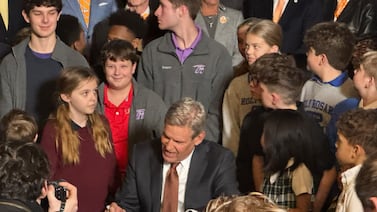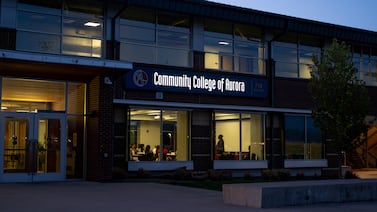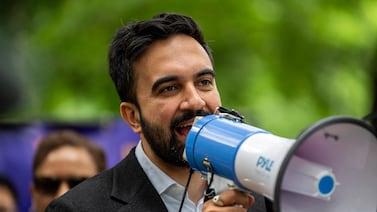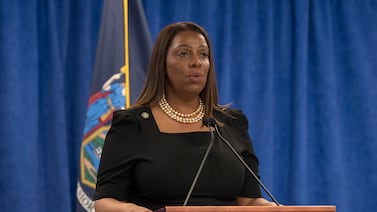Nearly 7,000 teenagers have signed up for New York City’s free online therapy program since it launched in November, with the largest numbers coming from some of the city’s lowest-income neighborhoods, city officials said Thursday.
A total of 6,800 teens have requested a therapist through Teenspace, a $26 million dollar partnership between the city’s Health Department and Talkspace, an online therapy platform that offers video and text-based mental health support.
The neighborhoods with the highest number of signups were Brownsville, Canarsie and East New York in Brooklyn, and Morrisania and Norwood in the Bronx. These areas, which have some of the highest poverty rates in the city, have historically lacked widespread access to mental health services, officials said.
Roughly 80% of teenagers using the program identify as Black, Latino, Asian-American or Native American, and almost 70% identified as female, according to the city data.
“We are meeting people where they are with a front door to the mental health system that for too long has been too hard to find,” said Ashwin Vasan, the city’s health commissioner, at a press conference Thursday alongside Mayor Eric Adams.
The preliminary data is the most extensive information the city has provided on how the major new initiative is working. When New York City announced the program last year, it joined a growing number of municipalities and school districts that have turned to telehealth and online platforms to try to broaden access to therapy amid an ongoing youth mental health crisis and shortages of providers.
Some experts have raised questions about the effectiveness of the practice, and other large-scale online therapy programs have sputtered. But Vasan cautioned that the “the cost of inaction is too high,” noting the elevated rates of youth suicidal ideation and attempts in New York City in the wake of the pandemic and arguing that therapy has traditionally been too difficult and burdensome for many teens to access.
The top reasons teens listed for signing up were feeling depressed, improving relationships, becoming the best versions of themselves, managing anxiety, and dealing with challenges at home and school, according to Vasan.
He emphasized that 65% of the teenagers who have signed up for the program “reported an improvement” after connecting with a therapist, who are required to be licensed in New York state.
Ruby Tarquinio, a 17-year-old student, said she’s learned through her Teenspace therapist that “bottling up thoughts leads to depression, numbness, and anger,” and has begun to “address the root” of her mental health challenges with the provider she met through the program.
“Everyone deserves to see beauty in themselves the way therapy allowed me to,” she said.
Dr. Jessica Chock-Goldman, a school social worker at Bard Early College High School in Manhattan, said she was encouraged to see the list of neighborhoods with the highest numbers of signups and the racial composition of the users.
“That is the group that needs access to care the most. So it’s absolutely reflecting the high-needs population,” she said.
But Chock-Goldman, also a professor at NYU’s Silver School of Social Work, said she still doubts that the services offered through Teenspace, which include texting with a therapist, holding once-a-month video sessions, or a combination of the two, can replace the benefits of more intensive therapy.
“It’s interim care, basically,” she said. “It’s a really good starting point. But this doesn’t mirror actual clinical work.”
More than 50% of the 6,800 teenagers who have signed up for TeenSpace have so far opted to only send texts with their therapist, while 42% are doing both video sessions and texts.
Vasan said he doesn’t consider that a problem. To the contrary, he said it’s evidence that “they’re engaging in the ways that they want to engage … The majority of them are using texting, which is native to young people. They just want to text sometimes.”
And when students present more serious needs, they are referred to outside providers, program administrators said.
TeenSpace therapists have helped navigate 36 “high risk” events, including suicide attempts, reports of child abuse, and a drug overdose, according to Dr. Jon Cohen, the CEO of Talkspace.
In those cases, Teenspace therapists referred students to child protective services, more intensive therapy, or hospitalization, Cohen said. Those interventions for students in high risk situations “may have significantly altered their life trajectory,” Cohen added.
He added that TeenSpace has deemed roughly 50 students at moderate to high risk of suicide.
Chock-Goldman pointed out that identifying 50 out of roughly 6,800 at moderate or high risk of suicide constitutes less than 1% — far lower than the 16% of high school students who reported suicidal ideation in 2021, according to city officials.
Cohen said the 50 figure only includes students flagged by an artificial intelligence algorithm that scans the contents of the text conversations to look for signs of risk, and that therapists may have separately identified other teens at risk.
Vasan acknowledged that the city has a long way to go in improving the program and expanding access to greater numbers of the more than 440,000 teens eligible for it.
Haajra Ali, a 16-year-old junior at the Brooklyn High School for Law and Technology in Bedford-Stuyvesant, who recently worked on an initiative to expand mental health access for teens, said she found the early results “incredible.”
“To see how people from these areas specifically are actually getting this help and parents are getting on board with it too, I think that says a lot,” she said. “I feel like this is definitely something good for the community.”
Michael Elsen-Rooney is a reporter for Chalkbeat New York, covering NYC public schools. Contact Michael at melsen-rooney@chalkbeat.org.






